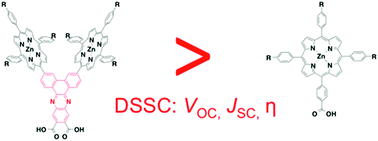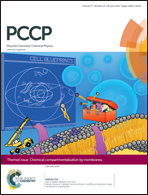Enhanced dye-sensitized solar cell photocurrent and efficiency using a Y-shaped, pyrazine-containing heteroaromatic sensitizer linkage
Abstract
A new sensitizer motif for dye sensitized solar cells (DSSC) has been developed. A heteroaromatic moiety containing a pyrazine ring links two porphyrin chromophores to the metal oxide surface via two carboxylic acid attachment groups. A test DSSC sensitized with the new molecule was 3.5 times more efficient than a similar cell sensitized by a single porphyrin model compound. The open circuit photovoltage was increased by a modest factor of 1.3, but the photocurrent increased by a factor of 2.7. Most of the increase is attributed to a reduced rate of charge recombination of the charge separated state formed by photoinduced electron transfer from the excited sensitizer to the TiO2, although some of the difference is due to increased light absorption resulting from more dye on the photoanode. Increased light absorption due to the pyrazine-containing group may also play a role. The design illustrated here could also be used to link complementary sensitizers or antenna moieties in order to increase spectral coverage.


 Please wait while we load your content...
Please wait while we load your content...